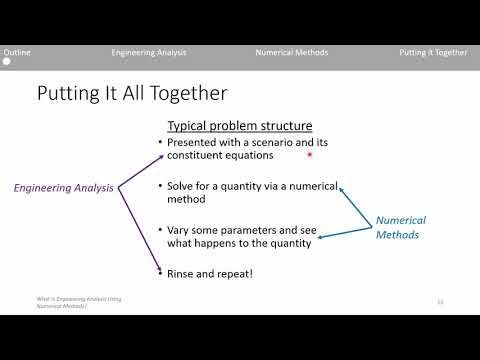RIVERS | Last Minute Revision | Leaving Cert Geography
Summary
TLDRThis video provides an in-depth crash course on rivers, breaking down complex topics into manageable sections. It covers the stages of a river (upper, middle, lower), processes like erosion, transportation, and deposition, and explains features like waterfalls, valleys, and oxbow lakes. The presenter uses relatable examples to explain terms such as hydraulic action, attrition, and abrasion. The video also touches on human impacts on rivers, like hydroelectric dams, and how these influence erosion and deposition. Throughout, the presenter emphasizes the importance of energy in river processes, making geography more engaging and accessible.
Takeaways
- 🌊 Rivers flow from their source to the river mouth, transitioning through upper, middle, and lower courses.
- 🏞️ The river's journey is marked by distinct stages: youthful, mature, and old, each with unique characteristics.
- 💧 Erosion in rivers is driven by hydraulic action, attrition, abrasion, and solution, with each process playing a critical role in shaping the landscape.
- 🏗️ Human interventions like dams impact river processes by altering velocity, discharge, and the river's capacity to transport and deposit sediment.
- 📚 Memorizing Simpsons characters' names can help students recall different erosion processes more easily.
- 🏞️ River deposition occurs when the river's velocity decreases or its discharge is reduced, leading to the dropping of its sediment load.
- 🌿 The lack of energy in a river, similar to a student too tired to carry their school bag, results in sediment deposition.
- 🚰 River transportation involves traction, saltation, suspension, and solution, with each method moving sediment differently.
- 🗺️ Key river features to identify include waterfalls, V-shaped valleys, interlocking spurs, and gorges, each formed through specific erosion processes.
- 🌱 The formation of features like meanders and oxbow lakes involves both erosion and deposition, requiring a nuanced understanding of river dynamics.
- 🌾 Human structures like dams can lead to economic impacts downstream due to changes in sediment deposition and the availability of alluvial soil for agriculture.
Q & A
What are the three sections of a river?
-The three sections of a river are the upper course, the middle course, and the lower course. These sections are also sometimes referred to as the youthful stage, the middle stage, and the old stage.
What are the four processes of river erosion?
-The four processes of river erosion are hydraulic action, attrition, abrasion, and solution. Hydraulic action refers to the force of moving water, attrition is the wearing down of rocks as they hit each other, abrasion is when rocks hit the riverbed or banks and wear them away, and solution is the dissolving of minerals in rocks by the chemicals in river water.
What causes a river to deposit its load?
-A river deposits its load due to reduced velocity or reduced discharge, meaning either there's less water or the river slows down, and it doesn't have the energy to carry its load anymore.
What are the four processes of river transportation?
-The four processes of river transportation are traction, saltation, suspension, and solution. Traction involves the rolling of larger rocks along the riverbed, saltation is the bouncing of smaller rocks or pebbles, suspension is the carrying of small sediment in the water, and solution is the carrying of dissolved minerals in the water.
What is the difference between a waterfall and a gorge?
-A waterfall is a section of river where water flows over a vertical drop or a series of drops, while a gorge is a steep-sided valley carved by a river, often formed by the retreat of a waterfall upstream.
What is an oxbow lake and how does it form?
-An oxbow lake is a U-shaped body of water that forms when a meander in a river is cut off from the main river channel, often due to natural processes like erosion and deposition.
What are the features of river deposition?
-Features of river deposition include floodplains, levees, estuaries, and deltas. These features are formed when a river deposits sediments as its velocity decreases.
How do human-made dams impact river processes?
-Dams impact river processes by reducing the river's velocity and discharge, which can lead to deposition of sediments. Downstream of the dam, the river may have increased velocity, leading to more erosion. Additionally, dams can affect the availability of alluvial soil for agriculture downstream.
What is the significance of river drainage patterns?
-River drainage patterns indicate how water flows across a landscape. They can be radial, trellis, dendritic, or deranged, and each pattern provides insights into the geological and geographical features of the area.
How can one identify river features on an OS map?
-On an OS map, river features such as waterfalls, meanders, oxbow lakes, and deltas can be identified by their distinct shapes and patterns. For example, waterfalls are often marked by steep, narrow valleys, while oxbow lakes appear as U-shaped lakes.
Outlines

此内容仅限付费用户访问。 请升级后访问。
立即升级Mindmap

此内容仅限付费用户访问。 请升级后访问。
立即升级Keywords

此内容仅限付费用户访问。 请升级后访问。
立即升级Highlights

此内容仅限付费用户访问。 请升级后访问。
立即升级Transcripts

此内容仅限付费用户访问。 请升级后访问。
立即升级浏览更多相关视频

How To Use Anki Like A Pro [Full Step-By-Step Walkthrough]

I gained 60.000+ Course Enrollments with this Secret

Mastering the Emergency Airway - An Overview | The Lung Course

What Is Engineering Analysis Using Numerical Methods?

O que faz o ANALISTA FINANCEIRO

Time-Saving Study Hacks: Cover Your Syllabus Quickly | Best Approach and Strategies
5.0 / 5 (0 votes)
